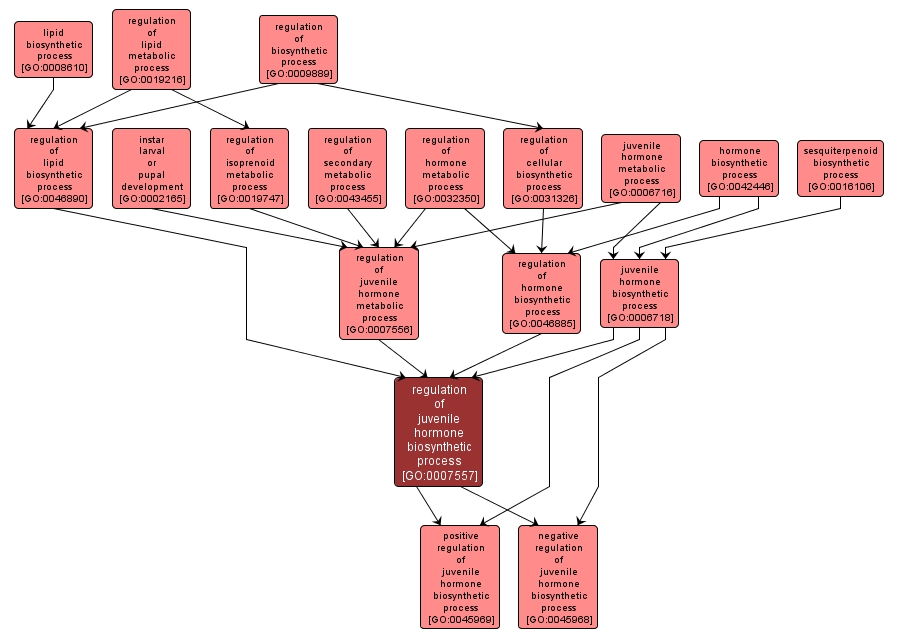GO TERM SUMMARY
|
| Name: |
regulation of juvenile hormone biosynthetic process |
| Acc: |
GO:0007557 |
| Aspect: |
Biological Process |
| Desc: |
Any process that modulates the frequency, rate or extent of the chemical reactions and pathways resulting in the formation of juvenile hormone. |
Synonyms:
- regulation of juvenile hormone synthesis
- regulation of juvenile hormone biosynthesis
- regulation of juvenile hormone anabolism
- regulation of juvenile hormone formation
|
|

|
INTERACTIVE GO GRAPH
|














